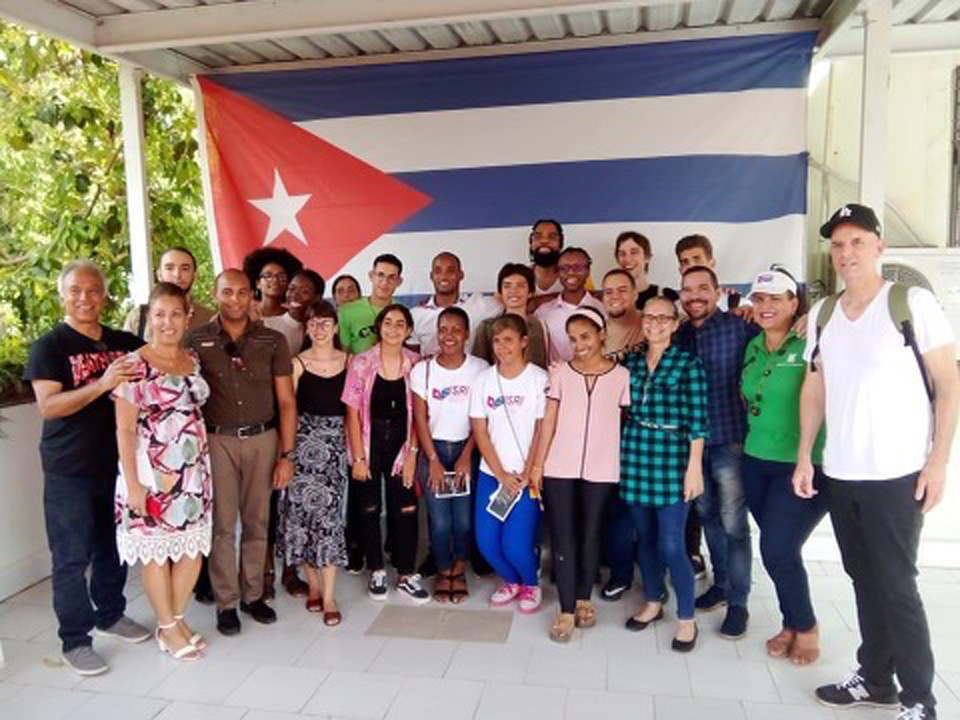
A group of seven Americans called the Hello Comrade Cuba Delegation was a diverse group of visitors to that country recently that went to exchange ideas with Cuban people and to lend support to their struggle to end the U.S. embargo against their country. In meetings leading up to their departure from the U.S., the group affirmed that while the trip was important to document the advancements of the Cuban Revolution, the measurement for a successful trip would rely largely on what they did upon their return to the U.S. and how they could harness their experiences to create a meaningful and successful solidarity movement.
Some easing had begun
During the Obama administration, Cuba, a small socialist country of roughly 10 million people located just 90 miles from the tip of Florida had begun to see some easing of sanctions with the opening up of formal diplomatic relations with the U.S. and the removal of travel restrictions for Americans, making it easier to visit the island for the first time in decades.
While the crippling Cold War era economic blockade of Cuba, which forbids Americans and foreign nationals who do business with the United States from initiating any economic transactions on the island, remained, there was a growing sentiment during the Obama years that continued diplomacy was possible. Despite the conservative nature of institutional American politics, for a brief moment it appeared that there was hope the inhumane and destructive blockade could ultimately be removed.
With the arrival of the ultra-right and opportunistic Trump administration, all progress on improving relations with Cuba was halted and policy towards the island was reduced to its value for right-wing domestic politics, particularly in South Florida. Some sanctions were reinstated.
The Trump administration used harsh outdated rhetoric against the small peaceful island to fire up its base, increase its fundraising, and to red-bait other politicians who argued for an opening with Cuba. On one of his last days in office, Trump, through executive order, placed Cuba on the State Sponsors of Terrorism list which had immediate effects on the Cuban economy, creating shortages and making everyday life harder for the Cuban people.
Unfortunately, the current Biden administration has failed to remove Cuba from the “list,” for fear of being labeled pro-socialist, and therefore, the people of Cuba continue to pay the price, while American politicians use the island for their own political gain. It was within this context that the Hello Comrade Project (HCP), a solidarity, friendship, and media group within the International Department of the Communist Party USA (CPUSA), decided to visit Cuba to document the resiliency of the Cuban Revolution and to gain an understanding of how to build a truly effective Cuban solidarity movement.

The group of U.S. visitors arrived on April 25th and were driven to their rented house in the Vedado neighborhood of Havana. For the next seven days, the group experienced not just the important work product of the Cuban people, but the radically different everyday reality of being in a socialist country. Many delegates remarked on the lack of police on the streets, the feeling of complete safety in all areas of Havana, and the general outward appearance of calm and contentment among the city’s population, as opposed to the anxiety and haste of the American city.
The group was provided a tour guide, Yani, and a driver and minibus, and each day was packed with activities. The Americans were picked up early in the morning and were dropped off at 8 p.m. or later each night.
Yani was a tireless professional who patiently answered dozens of questions per day and, remarkably, always had thoughtful and informed answers.
Our first stop was to the Finlay Institute where Cuban biochemists have been creating vaccines despite limitations imposed by the blockade. Dr Vicente Verez Bencomo, an internationally recognized scientist, leads the Finlay institute.
He explained to the group that the study of pathology has long been important in Cuba beginning with Dr. Finlay who helped uncover the fact that Yellow Fever was spread through mosquitoes. The Finlay Institute has created many vaccines it distributes globally including most recently several vaccines for COVID and another one for meningitis that has saved potentially millions of lives in Africa.
Preventive care important
Medicine and preventative care, including educating both doctors and patients, are important advancements of the Cuban Revolution and the group toured many sites related to the topic. The group visited Cenesex, which is a sex education institute with an emphasis on LGTBQ and Trans rights who were crucial in getting the new Family Code passed.
Cenesex is chaired by Mariel Castro, the daughter of Raul Castro, and the group met with her and discussed the role of Cenesex in developing the family code. Castro spoke about her work and was excited to meet visitors from the U.S.
The group also toured the Latin American School of Medicine which is an international medical school that educates, without tuition, medical students from around the world who commit to practice medicine in working class communities that lack proper health care providers. The group met with three U.S. students studying there and learned about their passion to provide healthcare for the poorest Americans.
The delegation saw the irony in a small island country struggling under a U.S. economic embargo training students for free to return back to the country oppressing them to provide medical services to people of the United States disregarded by the U.S. healthcare system.
One of the most important meetings the U.S. visitors attended was with two members of the National Assembly of People’s Power. The single-chamber legislative body of Cuba is a non-partisan legislature made up of 470 deputies from all regions of the country. The smallest number of people one deputy can represent is 10,000 and the largest is 20,000. Each deputy serves a five-year term.
Similar to legislative bodies around the world, the National Assembly makes domestic laws, oversees changes to the constitution, proposes the national budget, initiates plans for national infrastructure and economic development, develops foreign policy, and elects the President of Cuba who must be a member of the National Assembly.
The election process starts with local elections where electors choose representatives to the local government. Once elected, the municipal legislators nominate people for the National Assembly. In addition, grassroots organizations and labor unions can also submit candidates for the National Assembly. A popular election is held and each candidate must receive at least 50% of the vote to be elected to the Assembly.
The group visited the Old Capital Building in Old Havana where the current deputies have offices and hold meetings. The official proceedings of the Cuban Legislature happen in a different meeting space with a larger auditorium to hold the numerous deputies.
The pre-revolutionary neoclassical building was modeled on the United States Capitol building. Designed and constructed in the 1920s by a U.S. firm, the Old Capital is filled with the architectural embellishment of the era including a 50-foot gold-plated statue inside the rotunda called the “Statue of the Republic.”
For over an hour, the group asked many questions about how democracy worked in regard to elections and political representation. The deputies explained that electoral democracy in Cuba is based on community involvement in creating the list of potential candidates on the list.
There is no financing of the candidates or performative campaigning and instead candidates are chosen by their reputation in the districts and their contributions to the Cuban Revolution. In this sense, candidates are chosen for the ballot by what they have done in the community rather than how much money they can raise or by their skill at political theater.
Spoke of harmful effects
The delegates and the deputies spoke about the harmful effects of the blockade and how important an even larger and more politically astute United States solidarity movement for Cuba is needed.
Yet, just before the meetings ended one of the deputies declared, in a statement of defiance and resolve, that the Cuban people cannot wait around for domestic politics to change in the United States and that the Cuban Revolution would continue to plan, build, and grow its revolution regardless of the wishes of the United States government.
One of the most common anti-communist media narratives is that people in socialist planned-economy countries wait in long food lines only to have few healthy options and that there are constant food shortages. There are indeed some shortages of imported foods caused by the blockade, but the fresh food grown in Cuba is plentiful and accessible to the Cuban people.
During their time in Cuba, the group noticed an abundance of farmers markets, groceries, bakeries, and restaurants in all neighborhoods of Havana and its suburbs. In fact, in the small pocket park adjacent to the house they rented there were multiple options for Cuban street food and several fresh fruit and vegetable stands. These farmers markets were set up by cooperative farms.
The Americans visited the Arides Esteves cooperative farm just on the outskirts of the Havana suburbs and spent the afternoon learning about cooperative farming and exploring the diversity of foods grown in the area. The cooperative farms of Cuba have collective ownership where those who work the land, also own the rights to the profits generated by the farm.
These farms are both large and small and make up, roughly, 85% of all food production in Cuba. Because the cost to import fertilizers and pesticides is prohibitive, the vast majority of Cuban cooperative farms are organic.
During the special period in the 1990s after Cuba lost its primary trading partner, the Soviet Union, Fidel Castro promoted using biodynamic farming, where decoy plants are grown to attract invasive bugs away from crops, and the policy to create urban and suburban farming was developed. The group was given a tour of biodynamic farming in action.
At the cooperative farm, a field of yucca was planted, however, yucca has the tendency to attract a variant of the white fly that can destroy crops. In order to pull the white flies away from the yucca, the farmers planted corn throughout the field as it’s the favorite food for the invasive flies.
The flies gravitated to the corn leaving the yucca to grow perfectly without the need for any pesticides. The group tasted many of the various roots vegetables, greens, and especially loved the mango and pineapple grown on the farm. In the United States organic produce is much higher in price and mainly accessible only to the wealthy, while in Cuba nearly all domestically grown food is organic and is found in the public schools, hospitals, restaurants, and the grocery stores, cheap and accessible to all.
The May Day celebration in Cuba is a national holiday and one of the primary social events of the year. Because of the international nature of International Workers Day, many delegations of labor activists and solidarity organizations flood into Havana from all over the world for the events associated with May Day. The largest and most diverse delegation came through a program surrounding the “International Meeting In Solidarity with Cuba and Anti-Imperialism,” which included trade unionists and communist party members from many countries. The Americans were invited to attend some of the events scheduled in the days leading up to May 1, as part of the larger international delegations in Cuba for May Day.
The Friday before May Day the group boarded a large bus along with delegates from the CGT trade union organization in France, members of the Communist Party of India, and other labor activists to attend a May Day rally led by the Empresa Servicios Petroleros union and also the CUPET which is the largest state-owned gas and oil company.
The group was curious about how trade unionism works in socialism and found it interesting that both the union and the employer would be celebrating May Day together. In discussions with our guide Yani and Cuban trade unionists the group met at the event, it was explained that although Cuba is socialist there are still labor discrepancies and that issues do arise between workers and management.

Not a debate on the value produced
The primary difference is that, ultimately, it’s not a debate on value produced through labor and how it is distributed, which is a uniquely capitalist system contradiction, and rather, labor struggles under socialism are mostly organizational surrounding the working conditions for the union employees of the state-owned enterprise.
Under socialism, management tends to work closely with the trade unions as profits increase when ideal labor conditions are met, and higher profits add liquidity to the entire system, strengthening the economy as a whole. At the end of the day-long rally, the entire group of Cuban trade unionists, managers of CUPET, and all the international delegates sang along to the “Internationale” linking the struggle of Cuban workers to the struggle for the liberation of all workers in the global workers movement.
Finally, May Day had arrived and the Americans were excited to participate in the famous Cuban May Day celebrations. Earlier in the week the group was informed that the 2-million-person march and parade, where people from all over Cuba come to the capital, was changed to a series of events in each province as national fuel levels were precariously low due to the blockade and other transnational commodity issues outside of their control.
However, the night before the events, a tropical storm blew through Cuba knocking down power lines and creating dangerous waves splashing over the Malecon ocean-front walkway in Havana creating a dangerous situation for a large crowd. The May Day celebration events were postponed for a few days, but luckily for the U.S. group, hundreds of delegates were invited to the Palace of the Revolution for a rally and speech by Cuban President Miguel Diaz-Canal.
The Palace of the Revolution is located in Revolution Square next to the Central Committee building of the Communist Party of Cuba (PCC), and other Ministry buildings associated with the PCC. The Palace of the Revolution is a large concrete brutalist building with vast interior open spaces supported by massive concrete columns. Glass walls let in enough light so that large bright green Cuban plants with leafy foliage are grown creating a light and airy biophilic space and light-colored wood paneling on the walls and columns softened the rough concrete frame.
Two members of the CPUSA were seated on the front row facing the President and both gave brief speeches expressing their appreciation for the Cuban Revolution and vowing to continue building a Cuban solidarity movement to end the blockade once and for all. The event was loud and impassioned and many speakers discussed the importance of the Cuban Revolution and how appreciative they were of the bravery and resolve of the Cuban people protecting their revolution despite the intent of the wealthiest and most powerful nation on earth to destroy it.
Several U.S. people of color explained how they felt being in Cuba and that they had for the first time in their lives felt free and outside of the racism they experienced in their everyday life in the United States.
The President of Cuba gave an important speech on the current conditions of Cuban Socialism, the need for continued solidarity movements, and that the Cuban Revolution would continue regardless of any laws or sanctions imposed by the United States.
The Americans got to meet the President briefly and get a photo of him and the group. It was not the May Day they had expected, but it was an incredible experience for everyone and the rally left the group determined to help build a solidarity movement at home to contribute to the Cuban Revolution until the embargo is lifted.
The Hello Comrade Project left Cuba exhausted from an intense and busy 8 days of witnessing the Cuban Revolution first hand. They were all overwhelmingly impressed with the accomplishments of Cuban Socialism and the resiliency of the Cuban people to fight for the world they want despite the constant harassment and sabotage by the world’s most powerful imperial power.
If what the Americans had just experienced was during a “difficult economic time” for Cuba, imagine what a Cuba without the blockade would look like? A renewed and more rigorous Cuba solidarity movement is necessary, one that goes beyond the socialist left and appeals to the larger progressive movement in the United States.
The Cuban people are optimistic, intellectually ambitious, and exceptional innovators and they are excellent ambassadors of the Cuban Revolution. A successful solidarity movement should encourage Cubans in the arts, sciences, agriculture and medicine to interact with the people of the United States and engage with them highlighting the remarkable advancements of Cuban socialism. This amazing little island has built and retained a system that provides hope for an alternative to capitalism, it deserves to be protected and fought for and demands the attention of all who believe in a socialist future.
We hope you appreciated this article. At People’s World, we believe news and information should be free and accessible to all, but we need your help. Our journalism is free of corporate influence and paywalls because we are totally reader-supported. Only you, our readers and supporters, make this possible. If you enjoy reading People’s World and the stories we bring you, please support our work by donating or becoming a monthly sustainer today. Thank you!



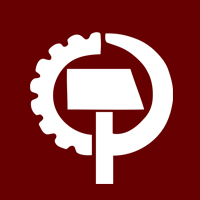
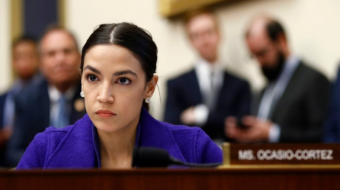
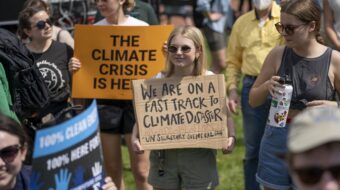
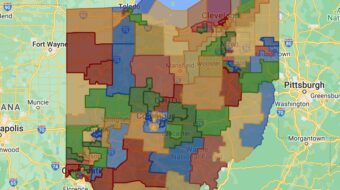





Comments